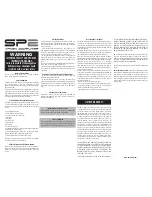
3. Fundamentals of Human Vibration Measurement
3.1. Introduction
Vibrations affecting the human body are called human vibration. The main purpose
of measuring human vibration is the prevention of health risks and the evaluation of
comfort, for example in vehicles.
Two categories are distinguished:
•
Hand-Arm Vibrations
, which are induced via the hands into the body. They
may cause, for example, circulatory disorder, bone, joint or muscle diseases.
•
Whole-Body Vibrations
, acting via the buttocks, the back and the feet of a sit-
ting person, the feet of a standing person or the back and the head of a recumbent
person. Such vibrations may cause backache or damage to the spinal column.
Both types of human vibration measurement are described in international standards:
•
ISO 5349
- Measurement and evaluation of human exposure to hand-transmitted
vibration
•
ISO 2631
- Evaluation of human exposure to whole-body vibration
(also ASA/ANSI S3.18)
•
ISO 8041
- Human response to vibration. Measuring Instrumentation
•
ISO 8662
- Hand-held portable power tools - Measurement of vibrations at the
handle
•
ISO 20283-5
- Guidelines for the measurement, reporting and evaluation of vi-
bration with regard to habitability on passenger and merchant ships
•
ISO 10056
- Measurement and analysis of whole-body vibration to which pas-
sengers and crew are exposed in railway vehicles
•
ISO 10326
- Laboratory method for evaluating vehicle seat vibration
•
ISO 28927
- Hand-held portable power tools - Test methods for evaluation of vi-
bration emission
Practical advice for measurement and evaluation of human vibration can be found in
VDI 2057
.
The subject of human vibration has gained particular importance in Europe since the
directive
2002/44/EC
came into effect. It specifies the duties of employers with re-
gard to workers protection.
3






































